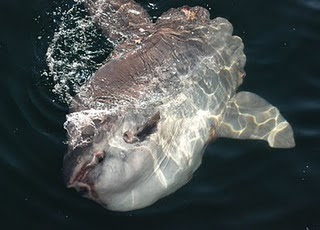Floating Classroom Program for Captain John Whale Watching and Fishing Tours, April 24, 2010

Today was the first official floating classroom provided by Captain John Whale Watching and Fishing Tours out of Plymouth, MA. The group onboard were high school students attending the 16th Annual High School Environmental Symposium sponsored by Mass Maritime Academy. Students participating in this two-day symposium came from all over the state of Massachusetts. Volunteering onboard the floating classroom was NECWA intern Nick Schomburg. This was Nick's first floating classroom as an instructor, but he had participated in a similar floating classroom program as a 7th grade student at Plymouth Public Schools. Nick jumped right into the Plankton Observation Station and co-taught the station with Dr. Sandy Williams. Students were fascinated to get a closer look at the plankton net that had just been used to collect a sample for their observation. And what a fabulous sample it was for it was chock full of copepods and amphipods as well as an occasional marine worm and ctenophore. Stud


